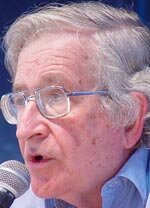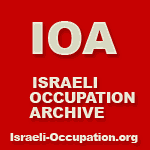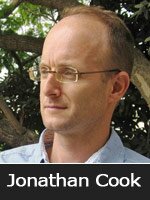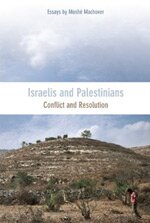Imad Samouni: I know Hebrew and I told the family not to worry because Jews have better hearts than we do, I worked with them for 10 years. They tied us up… There were 46 of us… “The soldiers passed among us, made our home into their hostel… [The shackles] hurt me terribly and my fingers swelled. A soldier tried to open them but couldn’t, and only made them tighter. My wife cried that they hurt me. He brought scissors and cut down to the flesh to open them. My wife cried… And I’m a man, I told them not to cry, and he brought new plastic ties. We stayed that way from Sunday to Monday…
Amira Hass
The army’s seizure of land “for military and security purposes” quickly turned into large-scale appropriation for the exclusive benefit of Israel’s super-citizens, at the expense of the subpar species.
“Although it was not my usual custom, I made a point of kissing my children every night,” one young father from Gaza City told me. “I never knew which of us would still be alive the next day, and I wanted to say goodbye properly.”
Vilnai is depending on Israelis’ total indifference to our Qassams: our soldiers’ nearly daily firing on Gaza civilians, regularly wounding and sometimes killing them.
Amira Hass has been a correspondent in the Occupied Territories for the Israeli daily Ha’aretz since the early 1990s. Hass describes her work as “writing about the Israeli occupation and Apartheid regime and about Israelis through the experiences of Palestinians.” She also covers internal Palestinian issues. She is the author of the widely acclaimed Drinking the Sea at Gaza and two books of collected articles.
It would be wrong to dismiss the wisdom of our leaders. Perhaps they’ve gotten exactly what they wanted – to strengthen Hamas in the Gaza Strip, both for perpetuating the intentional division between Gaza and the West Bank and to encourage perpetual low-intensity warfare (which sometimes escalates).
IOA Editor: Hamas, one of Israel’s most important – yet, invisible – allies, affords Israel the opportunity to conjure up “evidence” that an arrangement between Israelis and Palestinians is inherently impossible, particularly on account of Hamas, thus freeing Israel to colonize the little of historic Palestine that is still Arab – while dividing, ruling, and repressing Palestinians in Gaza, the West Bank, and Israel itself. (Lest we leave out Israel’s other excuses for not ending the Occupation, before Hamas it was Arafat who was “not a partner” for peace, and before him it was the Arab World, etc.)
What is delaying treatment of a 47-year-old Palestinian woman, if not punishment of someone who opposes her foreign rulers?
No one thinks to ask about the consensus among the residents of Palestinian cities and villages on whose land the settlements have been built. The millions of Palestinians don’t count at all.
“I wish these pictures reached leftists abroad,” my friend said … as she watched Hamas police use rifle butts and clubs to beat her friends – activists from the Popular Front for the Liberation of Palestine. Although my friend has never been a fan of the Fatah government in the West Bank, she is outraged by the romanticization of Hamas rule by foreign activists.
The violence of the occupier is the norm that no one questions, so much so that it becomes invisible. Only the response to that norm is presented and perceived as criminal, and the occupying nation wallows pleasurably in its eternal victimhood to justify its violent actions.
Henning Mankell, aboard the Gaza Freedom Flotilla: “We have been attacked while in international waters. That means the Israelis have behaved like pirates … The moment they start to steer this ship towards Israel, we have also been kidnapped. The whole action is illegal.”
But no one could say what killed 21 members of the Samouni family in a few minutes on January 5, 2009, in their neighborhood of Zeitoun. Some said it was shells fired by tanks in the main street. Some said it was something from the air, certainly not a plane that they would have heard. An Israel Defense Forces bulldozer destroyed the entire building later, with all its bodies, and it was difficult to identify the projectile. But what difference does that make? It was the Israeli soldiers who told them to gather in one house – women, children, elderly and middle aged people – and it was the soldiers who fired what they fired at them.
Security forces in the West Bank continue to arrest people identified with Hamas… The same security authorities that have won praise from the occupier for the quiet they’ve achieved while the occupier acts: confiscating land, demolishing homes, expelling people, arresting children, preventing free movement and killing.
There are about 35,000 Palestinians who live in the West Bank but are registered as Gazans. Due to Israel’s successful 20-year-old policy of isolating the population of the Strip, they are in permanent danger of deportation.
Were it not for Mohammed Abu Tir’s red beard, this would perhaps be only a marginal news item: Israel is working to expel four Palestinian residents of Jerusalem affiliated with Hamas from the city of their birth.
Israeli police … are sent to the streets of East Jerusalem as enforcers of government and municipal policy. It is that same policy of intentional discrimination that has brought 65% of the 303,429 Palestinians living in East Jerusalem below the poverty line (double the number of poor Jews in the city) and 74% of Palestinian children below that line. The police serve the government that since 1967 has expropriated 24,000 dunams (8,000 acres) of land from Palestinians and over the years has built more than 50,000 housing units on it – for Jews only. Police accompany the bulldozers that demolish homes built, for lack of choice, without permits.
Attorney Sari Bashi, director of the NGO Gisha that closely follows the restrictions on the freedom of movement of persons and goods, says that as far as is known, the “easing” has not included construction materials or raw materials. “Continuing the restrictions on the ability to produce will also limit the [Palestinians] buying power,” she said.
What serves the goal of separating Gaza from the West Bank better than forgetting the sealed Erez crossing between Gaza and Israel, and focusing on Rafah and cement? Unintentionally, the runners of the maritime and media blockade focused attention on aspects that do not undermine the essence of Israel’s closure of Gaza. And that essence is denying the right and thwarting the will of Gazans to be an active, permanent and natural part of Palestinian society.
IOA Editor: As always, one can count on Amira Hass to place current events in the context of Israel’s 43-year long Occupation, and the Occupier’s long-term interests which drive Israel’s actions. Important as the focus on the Flotilla is, viewing it in the context of the Gaza Siege and Israel’s designs to separate Gaza from Palestine is far more important.
“Denying my entry to the West Bank was a minor event, but significant because it indicates irrational behavior on the part of Israel,” the linguist Noam Chomsky said at the start of his lecture last Tuesday to a few dozen students and faculty members of Bir Zeit University. He delivered his lecture, “Americans and the World,” by video conference, of course: He in Amman, his audience in one of the university’s lecture halls.























